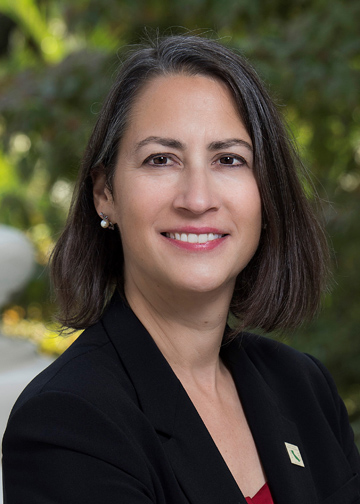Implementing Wildlife Connectivity Corridors
California is home to over 39 million people who live in communities large and small across nearly 156,000 square miles. Our wilderness is also vast. From fog-shrouded beaches to the numerous mountain ranges whose peaks and ridges form the spine of our state, California is land rich, but our urban sprawl is eating away at the land our wildlife depends upon to find food, shelter and unrelated mates. Nowhere is that more clear than here in the Southland where backyard encounters with bears, mountain lions and coyotes happen on a regular basis.
As our communities and the miles of roadways connecting them have gown, the biggest threat to our diverse array of wildlife is us. Nearly 100 mountain lions are struck and killed by vehicles in California annually; and those are just the reported fatalities. The numbers do not account for the mountain lions that are hit but manage to limp off the road, only to later succumb to their injuries. On the 10 lane freeways that bifurcate the Santa Monica and Santa Ana mountain ranges, vehicles are killing mountain lions faster than they can breed. Without intervention, mountain lions in these mountain ranges could be extinct in the next 50 years.
In the United States alone, there are nearly 2 million vehicle collisions annually involving wildlife, resulting in not just millions of deaths and injuries to wildlife of all shapes and sizes, but also 200 human deaths and 26,000 injuries, and $8 billion in property damage every single year. Our roads are not only disrupting ecosystems, they are destroying entire populations of native wildlife. There’s a simple solution to stop animals dying on our roadways: We must take the wildlife that call home the area around our roads into account as we plan and develop.
This year, I introduced AB 1889 to do just that. The bill requires local governments to consider wildlife connectivity corridors when developing housing, building or improving local roadways. AB 1889 builds upon the work that I’ve done with AB 2344, which was signed into law in 2022 and required Caltrans to identify wildlife connectivity needs across the state’s highway system and to address wildlife connectivity when building or improving state highways. While some counties, like Ventura County, have voluntarily adopted wildlife connectivity plans, we need the planning and solutions across county lines.
Other parts of the world have been doing this with great success. Canada built six wildlife overpasses and 38 wildlife underpasses in Banff National Park. The Netherlands has built an astounding 600 animal crossings. The United States and, by extension California, is desperately far behind the curve. Slowly, but surely though, wildlife connectivity corridors are gaining traction here in the United States.
The Wyoming Dept. of Transportation recently constructed two wildlife overpasses and six underpasses. The results were nearly immediate: tens of thousands of animals use the new crossings and vehicle collisions dropped by an astounding 80%. Colorado saw similar results when it started planning wildlife connectivity corridors. It built two wildlife overpasses and five underpasses. Colorado saw its animal collisions drop by 90%. A cost benefit analysis of the Colorado wildlife corridors found that, due to the decreased property damage, healthcare costs and reduced need for public services due to the drop in collisions, the crossings would pay for themselves in 20 years. Wildlife connectivity corridors are not just the right things to do for our wildlife and ecosystems – they also make fiscal sense. California must catch up.
Highways aren’t the only roadways that imperil wildlife, though. Neighborhood roads and the overall design of communities can be dangerous. Every year during turtle hatching season, beachside communities work to round up baby turtles that instead of swimming toward the ocean find themselves on neighborhood roadways. That’s because the lights glowing from houses confuse them. Scientists think turtles mistake the house lights and streetlights for the moon reflecting off water and go the wrong way.
While good fences may make good neighbors, they often aren’t so friendly to wildlife. According to the New York Times, the American West has 620,000 miles of fencing, both in neighborhoods and throughout our wilderness areas due to livestock grazing. One University of California Berkeley study found that the fencing around the world exceeds roads by an order of magnitude. We’re all so used to fencing that we don’t even see it. How we design and place fencing can have a significant impact on the migration and daily patterns of wildlife. AB 1889 will address fencing in wildlife connectivity corridors, too.
All of these things have one thing in common: We didn’t plan around wildlife. We didn’t take it into account at all when developing communities. Unless we change our planning process going forward, humans and wildlife are going to continue to come into conflict. We can’t continue to do nothing about that. Millions of wild lives lost, hundreds of human lives lost, billions of dollars in damages – none of that is acceptable. But it is fixable. We can build infrastructure and update communities so that they’re livable for all. Cities and counties support AB 1889 because the only path forward, economically and morally, is to be better, more humane planners. AB 1889 will require it.
AB 1889 has already passed the Assembly and is now moving through the Senate. The planning that we do at the local level, along with the ongoing efforts across our network of state roadways, has the potential to bolster our biodiversity and save lives.
What are your thoughts on AB 1889? As always, I’d like to hear your thoughts on our budget, legislation or any general comments or concerns. You can reach my District Office at (818) 558-3043, or by email at Assemblymember.Friedman@Assembly.ca.gov.

